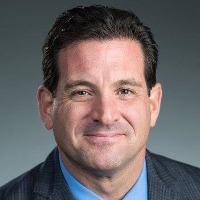Over your career, you’ve probably accumulated quite a collection of financial accounts – maybe more than you’d like to keep track of, and as retirement approaches, there’s a natural desire to simplify and consolidate. That makes sense! However, while over-complexity isn’t good, neither is over-simplifying. But when it comes to building a robust retirement framework, having just a checking account and a 401(k) may sound nice and easy to manage, but they’re probably not enough to cut it.
We believe that the magic number for accounts is around seven. Why exactly seven? These are seven different types of accounts, most of which are accessible to a wide range of people, that can work together to help maximize your retirement readiness. Each one plays a unique role and offers specialized benefits, particularly when it comes to tax advantages.
You might not need every account we’ll talk about, and that’s fine. But if you’re missing some key ones, you might want to think about adding them to your retirement plan. The goal? Strike the perfect balance: enough diversity to maximize benefits and flexibility without making account management a full-time job.
1. The Foundation: Your Checking Account
Let’s start with something that might seem obvious – your checking account. While it’s basic, there’s at least one change in retirement that you may want to consider: the floor of your account.
During your working years, you’re probably used to having a surplus flowing into your checking account each month. But in retirement, you’re typically working with a fixed monthly income that’s closer to your actual expenses. But let’s say you’re planning for $10,000 in monthly expenses – letting your account balance hit zero at the end of each month in retirement isn’t giving you much breathing room. What will you do if you have a roofing emergency near the end of the month and your funds are locked away in accounts that could take a couple of days to retrieve?
To prevent resorting to a credit card in case of an emergency, consider raising your checking account’s floor to a month or two of expenses. Using our example, that means keeping $10,000 as your new minimum. When your monthly income of $10,000 comes in, you’ll be at $20,000, and as you spend through the month, you’ll work your way back to that $10,000 floor. This will give you a comfortable buffer for unexpected expenses without having to scramble between accounts.
2. A High-Yield Savings Account
An astonishing amount of Americans keep their savings in low-yield savings accounts and checking accounts and, unfortunately, are potentially missing out on growth opportunities in high-yield savings accounts, many offering an APY of 5% or greater. In fact, only about 20% of Americans take advantage of them. https://info.plinqit.com/stateofsavings2024/
For an account with $100,000, that could be the difference between earning $60 in interest versus $5,000 for the year. But where do you find these rates? Check out online-only banks. Not having physical branches helps them pass those savings on to you in the form of higher interest rates. And yes, you still get the same FDIC insurance up to $250,000.
Here are just a few examples of online banks offering great rates at the time of writing:.
| Bank Name | APY | Minimum Balance/Deposit |
|---|---|---|
| Pibank | 5.00% | No minimum balance |
| Zynlo Bank | 5.00% | $10 minimum deposit |
| Fitness Bank | 4.90% | Rates vary by activity |
| Jenius Bank | 4.80% | No minimum balance |
Source: https://www.investopedia.com/best-high-yield-savings-accounts-4770633
A couple of things to keep in mind: These accounts may limit you to a set amount of withdrawals per month, and it typically takes a few days to transfer money to your checking account. So you’ll want to plan ahead a bit. But for money you don’t need immediate access to, it’s a good way to help fight inflation with minimal risk.
3. The Health Savings Account
- A) Before we go into the benefits of an HSA, let’s first check if you can open one. You need to be at least 18 (easy enough!) and be enrolled in a high-deductible health plan. If you’re employed, check with your HR department about HSA eligibility. If you’re self-employed, you’ll want to look specifically for HSA-eligible healthcare plans.
Now, if you do qualify, here’s why we love HSAs: they’re the only account that gives you three tax benefits in one. You get a tax deduction when you put money in; it grows tax-free like a Roth IRA, and if you use it for qualified medical expenses, you don’t pay tax when you take it out. It’s like getting the best features of both traditional and Roth IRAs in one account.
But here’s where it gets interesting for retirement planning: Once you turn 65, your HSA can actually function like a regular IRA if you want it to. You can use it for anything – not just medical expenses – though you’ll pay regular income tax on non-medical withdrawals (just like a traditional IRA).
Some specific ways retirees use their HSAs:
- If you retire before 65, you can use it to help bridge the gap to Medicare
- After 65, you can use it tax-free to pay Medicare Part B and Part D premiums (though not Medigap policies) (https://www.irs.gov/publications/p969)
- You can invest the money within the HSA account, just like an IRA
One important heads-up: If you’re thinking about estate planning, HSAs aren’t usually the best account to leave to heirs as the entire account becomes taxable to your non-spousal beneficiary in the year they inherit it. It’s usually better to use this money during your lifetime for healthcare costs.
4. Your 401(k) or Workplace Retirement Account
If you’re employed or run your own practice, your 401(k) is likely going to be one of your core retirement accounts – and for good reason. The tax advantages are substantial: you can either reduce your current tax bill with traditional pre-tax contributions while your money grows tax-deferred or opt for a Roth 401(K), where your money grows completely tax-free as long as you follow the rules. Plus, many employers offer matching contributions – that’s free money you don’t want to leave on the table.
The key is choosing between traditional and Roth contributions based on your tax situation. Think about whether you’d rather get the tax break now or in retirement. And don’t worry too much about being locked into your choice – you can actually have both types to give yourself more flexibility down the road.
5. IRAs
While 401(k)s are great, IRAs offer something different: even more control and flexibility. You can open an IRA with any custodian you choose, select from a wider range of investments, and often access lower fees. If you leave your job or sell your practice, you can roll your 401(k) into an IRA – this might make sense if you want more investment options or lower costs than your old 401(k) or new employer’s plan offers.
Like 401(k)s, IRAs come in traditional and Roth flavors. Having both types gives you more control over your tax situation in retirement. If you make too much to contribute directly to a Roth IRA, you might be able to execute a backdoor Roth strategy. If you’re married and one spouse isn’t working, don’t forget about spousal IRAs either – that’s an often-overlooked opportunity to get more money into tax-advantaged accounts.
7. The Brokerage Account
Think of a brokerage account as your “no rules” retirement account. Unlike retirement accounts with their contribution limits, RMDs, and age restrictions, you can put money in and take it out whenever you want. Plus, with today’s tax-efficient ETFs and strategic tax-loss harvesting opportunities, you can manage your tax bill pretty effectively. While you may need to pay taxes on dividends and gains each year, long-term capital gains rates are usually lower than ordinary income tax rates.
Putting It All Together
Having the right accounts is just the start – the real challenge comes in orchestrating everything into a cohesive retirement strategy. You’re not just managing these seven accounts; you’re also timing Social Security benefits, planning for Medicare premiums, considering insurance needs, and possibly exploring risk management tools like annuities. Each decision affects the others, and getting the timing right matters. For instance, the timing of when you start taking Social Security can influence your Medicare premiums, which in turn could affect the amount you need to withdraw from your retirement accounts.
One Possible Order of Withdrawal Strategy
Then there’s the art of taking money out of these accounts in the right order to minimize taxes and make your money last. Should you tap your brokerage account first? Start Roth conversions? Pull from your Roth instead of your Traditional account in a high-income year at the expense of long-term growth? These decisions get complex fast, which is why many CPAs – even those who handle complex tax planning for clients – can benefit from working with retirement specialists who focus on integrating all these moving pieces.
Let’s Talk About Your Retirement
As a CPA, you’re already wearing multiple hats – managing your practice, taking care of clients, keeping up with tax law changes, and somehow trying to maintain a work-life balance. Do you really have the time to create, monitor, and continuously adjust your own retirement plan? Even with a deep knowledge of tax strategies and financial planning, retirement planning is a whole different ball game that requires constant attention and adjustments.
That’s where we come in. Working with specialized retirement specialists can increase your chances of a successful retirement while taking a huge weight off your shoulders. Because let’s face it – you’ve got enough on your plate already.











